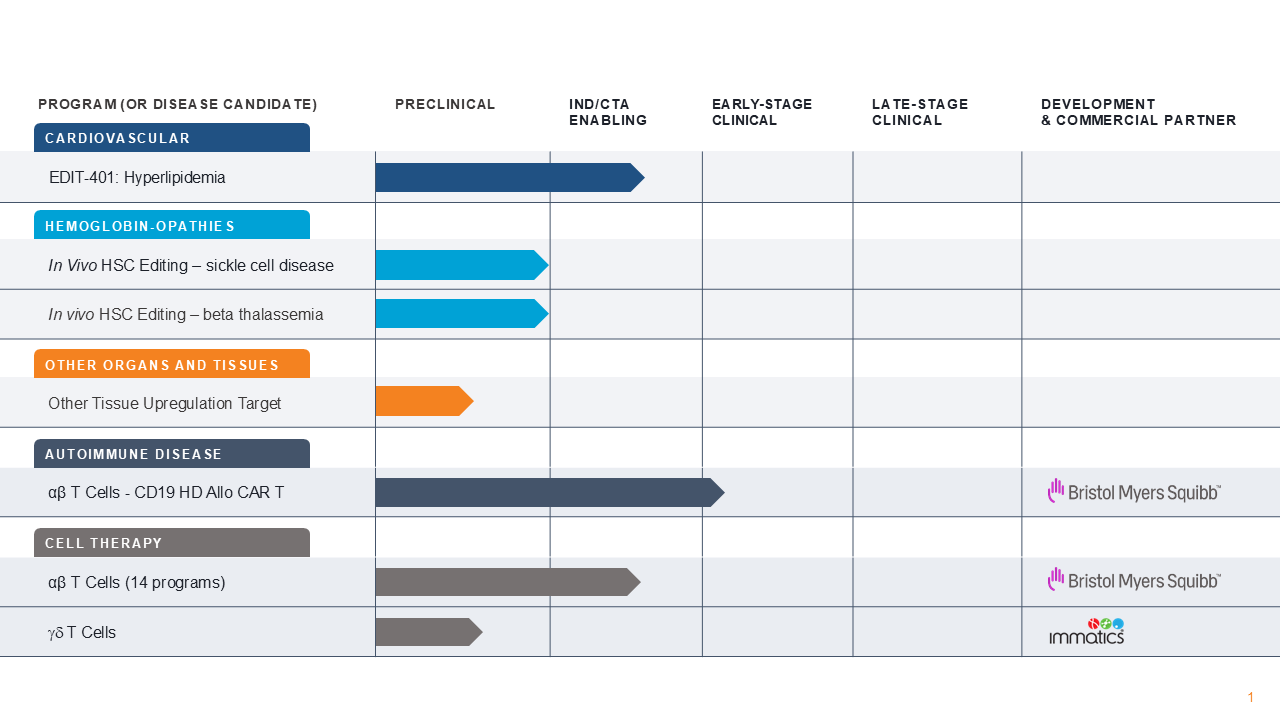
![]()
OUR RESEARCH AND PIPELINE
Our mission is to translate the power and potential of gene editing into a broad class of differentiated and transformational medicines that can transform lives.
We have focused our research and development efforts on diseases for which there are currently few or no treatments available. Editas Medicine works with two distinct CRISPR nucleases: Cas9 and Cas12a (also known as Cpf1). Both nucleases have distinct gene editing and targeting capabilities. Using these two nucleases, we can access a broad range of genetic mutations and develop targeted and durable gene edited medicines.

Cas9
Cas9 is a programmable protein that specifically locates, binds to, and edits the DNA of targeted genes. Cas9 accomplishes this by pairing with a guide RNA molecule that recognizes and initiates a double-stranded break at the target DNA sequence that is then repaired by the cell.
Cas9 has rapidly accelerated biomedical research around the globe and is enabling the development of previously impossible gene-editing medicines and cell therapies.

Cas12a/Cpf1
Cas12a (also known as Cpf1) is a CRISPR protein similar to Cas9, but with important molecular differences in its mechanics of DNA targeting and editing. For example, Cas12a guide RNA has differences in its protospacer adjacent motifs—sequences in guide RNA involved in DNA targeting—that allow the nuclease to target unique DNA sequences in the genome. Cas12a also makes staggered DNA cuts that enable increased efficiency and accuracy for certain forms of gene repair.
These differences make Cas12a an excellent complementary tool that broadens the already expansive range of applications for CRISPR gene editing.
We are researching and developing in vivo gene editing medicines that edit genes inside the body. Leveraging this approach will help us target a broad range of diseases.

Programs Positioned for Development



